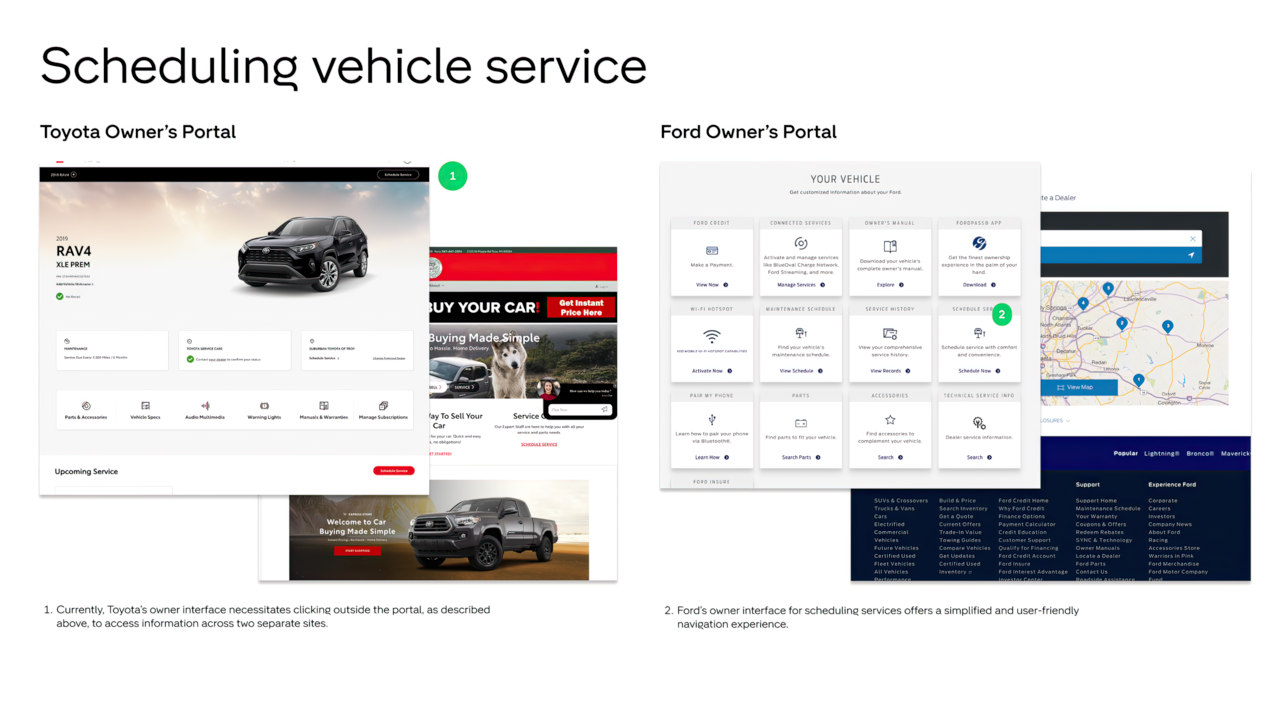
Elevating Dealership User Experience Through Creative Direction and UX Design

Collaborating closely with the design director and stakeholders, my role in the project was multifaceted. As the lead UX designer, I took charge of steering the project towards a cohesive and impactful outcome. The collaborative efforts within the team were instrumental in ensuring a holistic and successful transformation.
The project was commissioned by Toyota, focusing on enhancing the Dealership Owners Portal to improve user satisfaction and streamline operations for dealership owners.
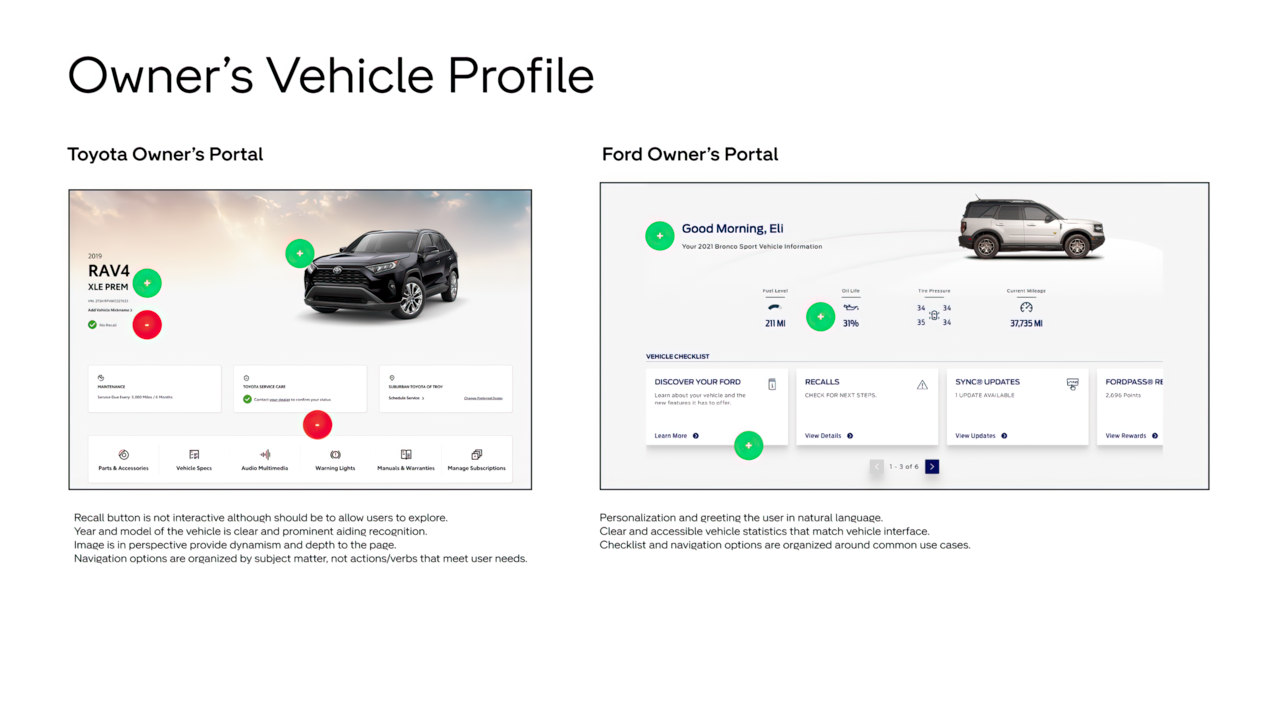
Day 1-2: Research and Discovery
Day 8-9: Prototyping and Usability Testing
Day 10-11: Iteration and Refinement
Day 12-13: Presentation Deck Preparation
Day 14: Final Review and Presentation
Post-Presentation:
The goal was not just to revamp the digital interface but to fundamentally redefine the user experience for Toyota's valued dealership owners. The primary objectives were to enhance usability, provide a personalized experience, and position Toyota as an innovator in the automotive digital landscape.
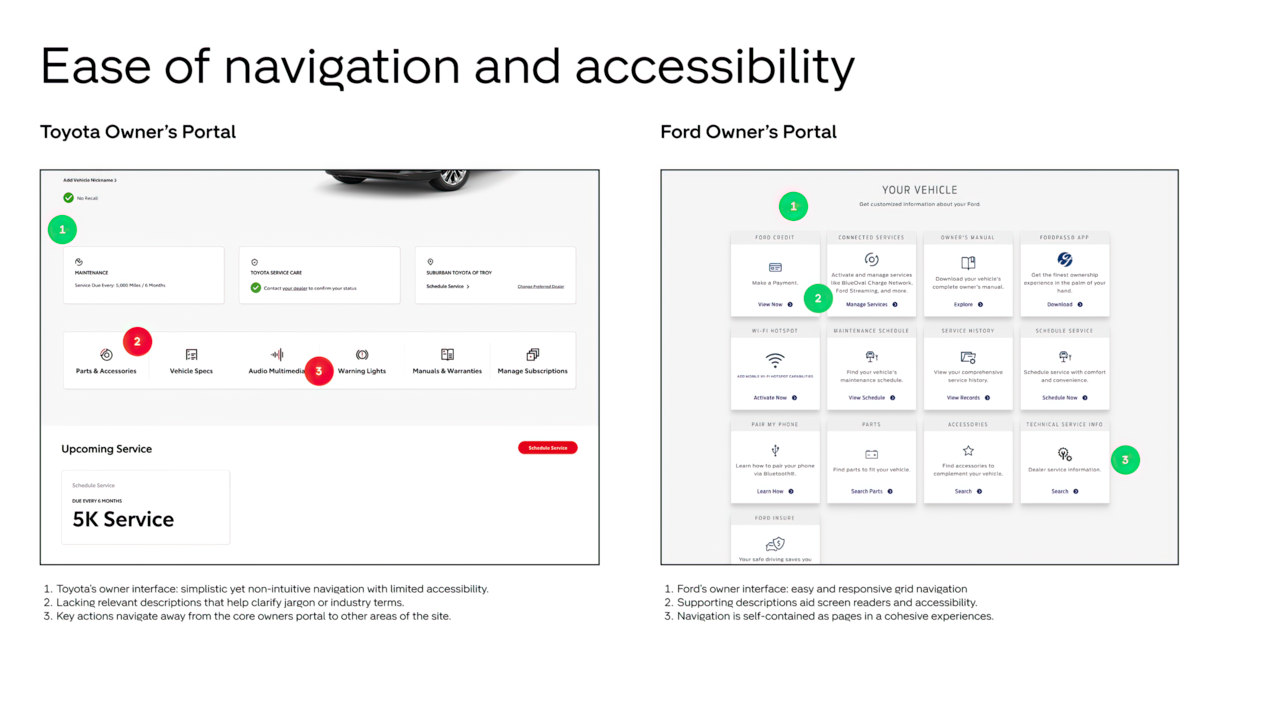
The existing portal faced challenges related to user navigation, data presentation, and personalization. These issues not only hindered the smooth functioning of dealership operations but also posed a risk to the brand perception among owners. Navigating within the defined scope of the project required strategic decision-making, addressing constraints such as tight timelines and limited access to competitor portals.
A. In a dynamic one-week timeframe, our focus was on transforming Toyota's Dealership Owners Portal. The initial days involved rigorous research, including stakeholder interviews and usability testing, laying the groundwork for improvement.
B. Day 3 saw a meticulous analysis of Tesla and Ford's portals, paving the way for informed redesign decisions. With agility, Days 5 and 6 were dedicated to prototyping, usability testing, and iterative refinements.
C. The project culminated in a powerful pitch deck, unveiling proposed enhancements and a thorough comparative analysis to Toyota's stakeholders.
The systematic research approach involved stakeholder interviews, usability testing, and competitor analysis. Key steps included ideation, wireframing, prototyping, and iterative testing. The tangible outcomes were transformative, with the redesigned portal featuring a streamlined interface, personalized dashboards, improved data visualization, and enhanced accessibility. These achievements seamlessly aligned with Toyota's commitment to innovation and excellence.
The research phase encompassed context studies, understanding user pain points, and conducting a competitive audit. Methods included formal walkthroughs and high-fidelity prototype testing with recruited participants at a local dealership.
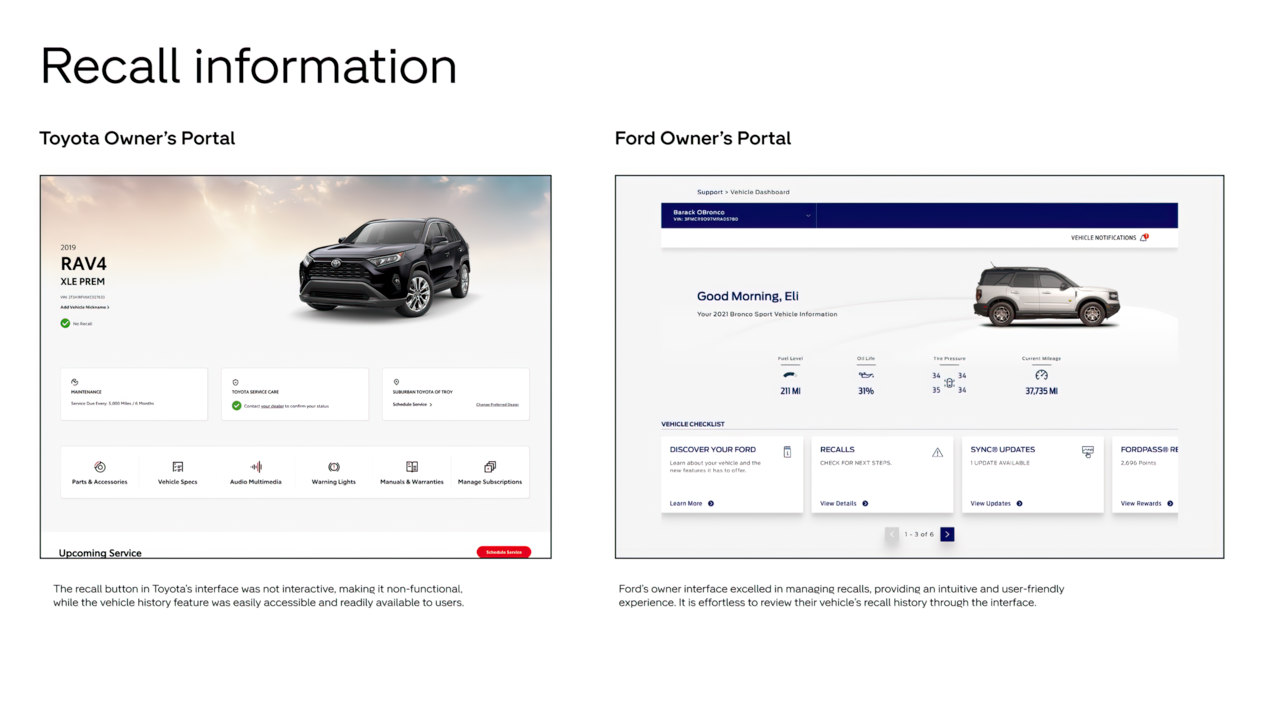
Strategic communication played a vital role in presenting findings and recommendations. Crafting a compelling pitch deck involved visualizing data effectively, showcasing comparative analyses, and emphasizing how the redesign aligned with Toyota's brand values. This approach ensured that the project's value was effectively conveyed to diverse audiences, including stakeholders and the board.
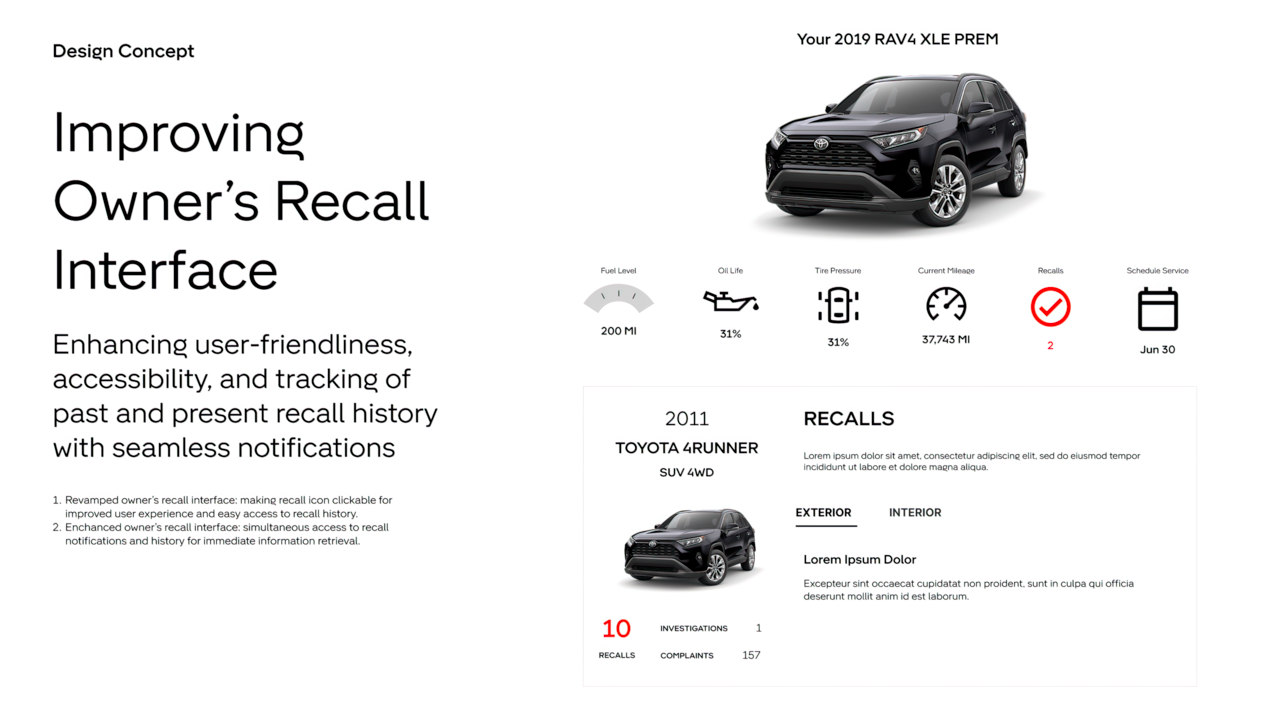
In conclusion, the redesign of Toyota's Dealership Owners Portal was a strategic move to enhance user satisfaction and streamline operations. This use case study encapsulates the lead UX design journey, highlighting the impact of a well-executed redesign on user experience and brand perception. The key takeaway is the transformative power of thoughtful design in shaping digital landscapes and elevating user engagement.